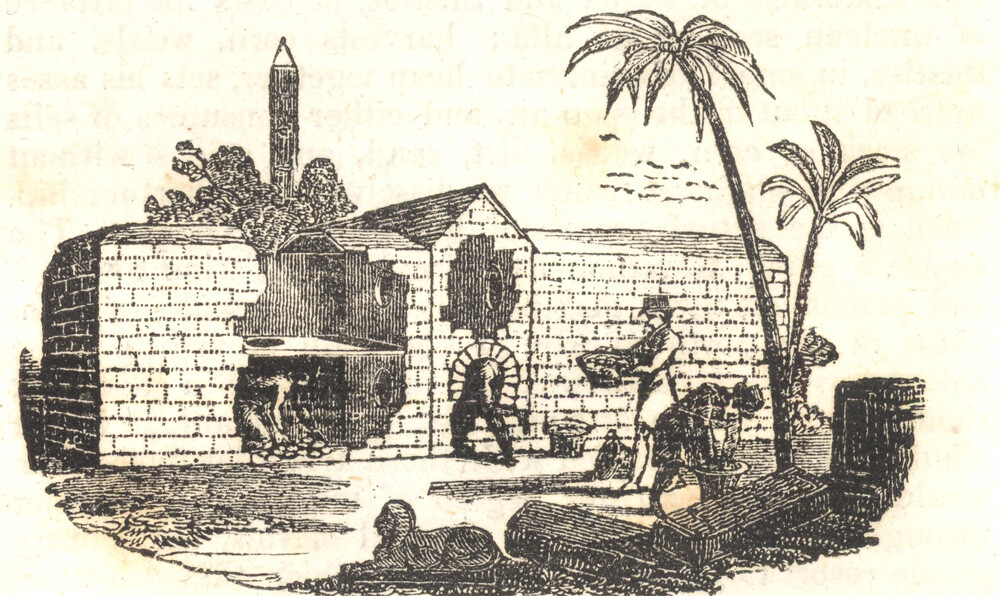3 Ways Ancient Egyptian Technology Was Surprisingly Advanced

If you go back far enough, it's surprising ancient Egypt existed at all, so you might say just about everything they did counted as surprisingly advanced. "Really, they had bowling balls seven thousand years ago?" you might say. "They had clocks, and didn't just look up at the sun? Wow, I assumed everyone back then lived in holes and communicated using grunts."

But even once you get past the basics of the idea that civilization started earlier in some parts of the world than others, a few aspects of ancient Egyptian tech seem extra impressive.
Like medicine. You might have heard that medicine way back then was all based in belief in magic, and well, you'd be right, according to most of the papyruses we found dating to around 1500 BC. But then we found another, dubbed the Edwin Smith Papyrus (dubbed by Edwin Smith, who bought it in 1862). It's a scientific medical treatise, describing maladies and treatments organ by organ. It describes surgical methods, the functions of different parts of the brain, and how best to deal with someone with a damaged spinal cord. Ancient Greece, for comparison, didn't have info this detailed even a thousand years later.
Don't Miss
If you want something more visual, take a look at this prosthetic toe from 3,000 years ago. The wooden device, bound with leather thread, looks a bit more elegant than the peg legs or hooks you might have thought were common even a few centuries ago. And it's held up pretty well (better of course than the mummied foot attached to it):
Next up, let's look at an industry you perhaps have never thought about: egg incubation. If you raise chickens, you can leave the hens to sit on eggs in their nests, or you can collect the eggs and warm them artificially to hatch them on an industrial scale. In the 1700s, travelers to Egypt were stunned by Egyptian egg ovens (or "chicken factories"), and back home, Europeans tried and failed to replicate them using travelers' descriptions. Finally, someone invented an electric incubator at the end of the 19th century.
Egyptian egg ovens were made of mud, were sometimes shaped like little pyramids, and each of them stored and hatched thousands of eggs. But we're not talking about them here because Egypt invented these in the 1700s, impressing visitors from France. We're talking about them here because they had been using this same technology, unchanged, for thousands of years, and those Enlightenment writers described them with the exact same level of fascination as ancient Greek visitors had back in BC times.

Last thing for today, let's talk about the Suez Canal. Not the one you know of now, which connects the Mediterranean and Red Seas, but the Ancient Suez Canal, which linked the Red Sea to the Nile. We aren't sure just when the Egyptians first carved out this artificial waterway, but it might have been as far back as the 1800s BC. Even a thousand years later (perhaps the real date it started, after earlier attempts failed) would have been pretty early for someone to create their own river 150 feet wide and 100 miles long.
It wasn't quite as advanced as the modern Suez Canal by most measures, but it was more advanced in one respect. Today's Suez Canal links two bodies of water at the same elevation. The ancient counterpart had to connect the Red Sea to the lower-lying Nile, which meant they had to create locks—individual sections that go up and down—like the Panama Canal has. Also, we have no accounts of single ships getting stuck and blocking the old canal for an entire week, which actually makes the old canal inferior in our book because it means it was less funny.
Want to get all of this week's Egypt articles packaged together in one shot, so you don't miss a thing? Subscribe to the weekly Saturday Morning Cracked newsletter:
Follow Ryan Menezes on Twitter for more stuff no one should see.
Top image: University of Manchester
